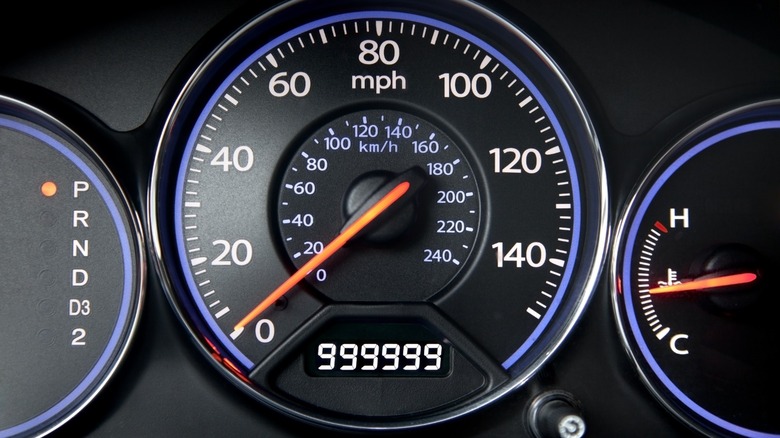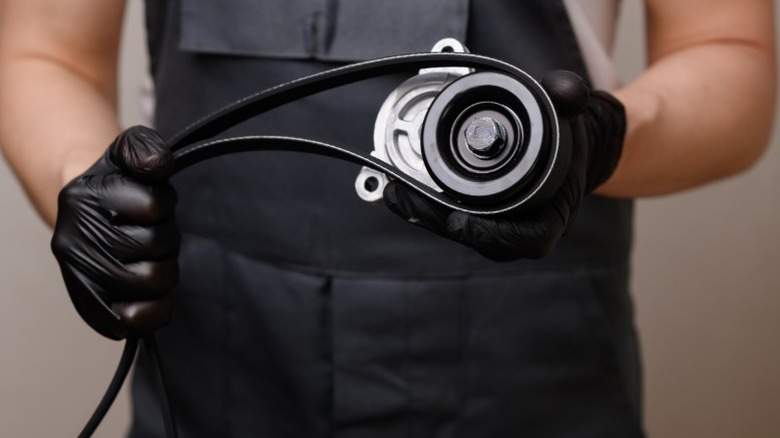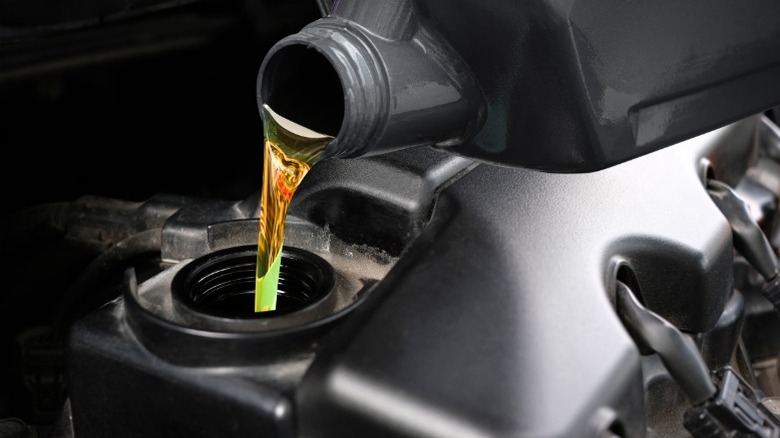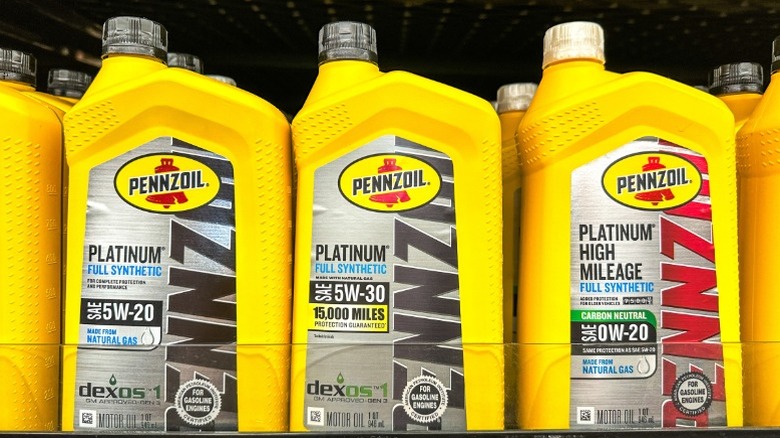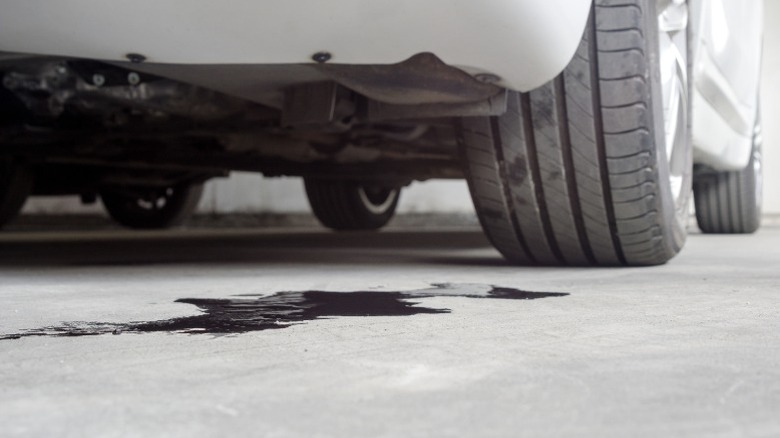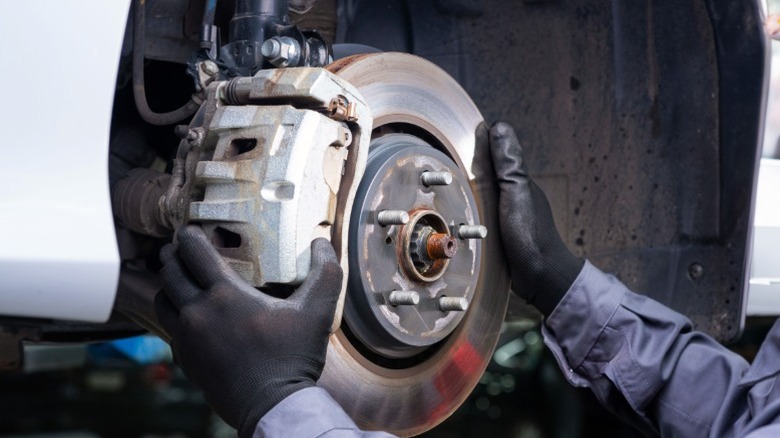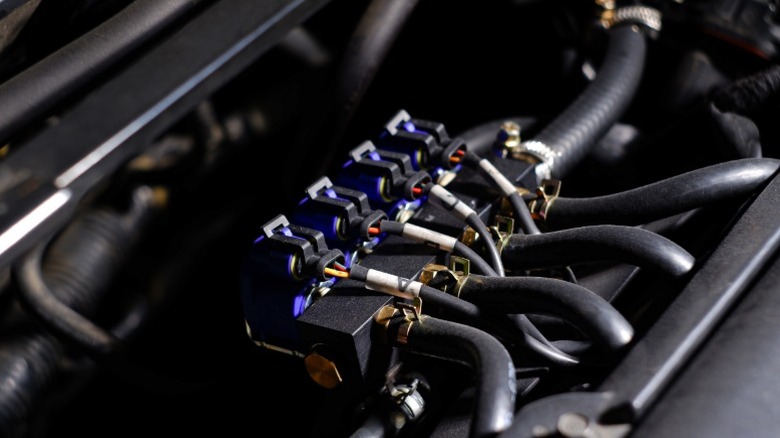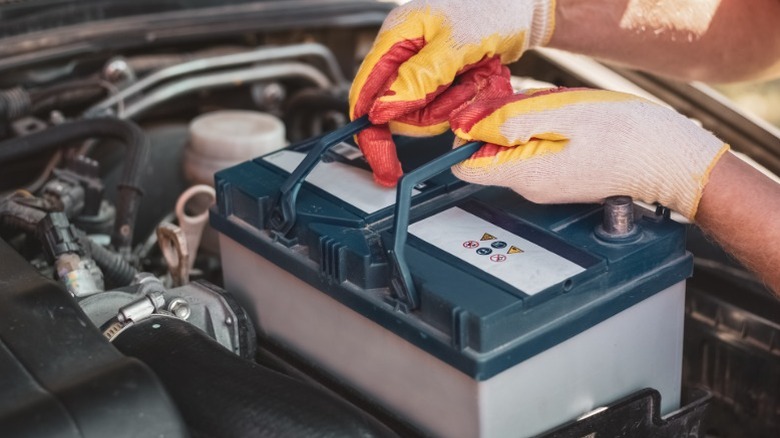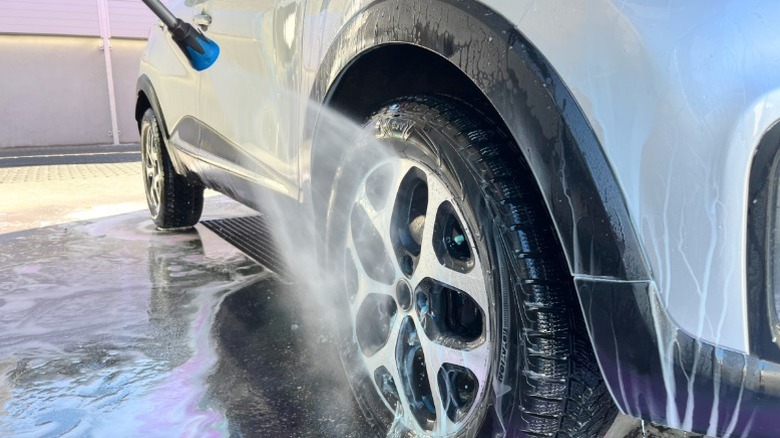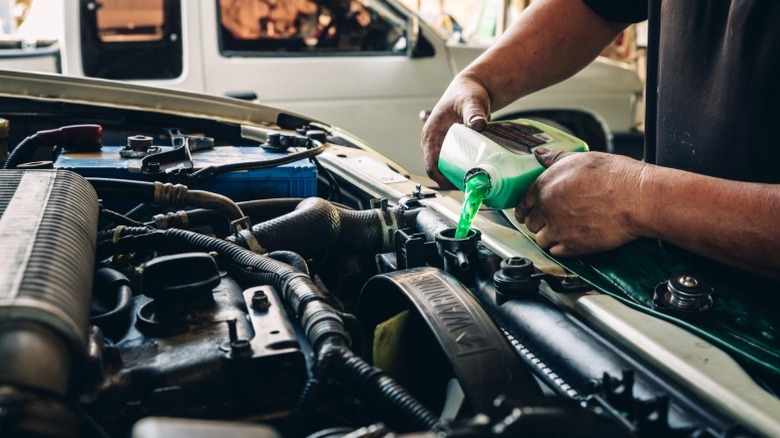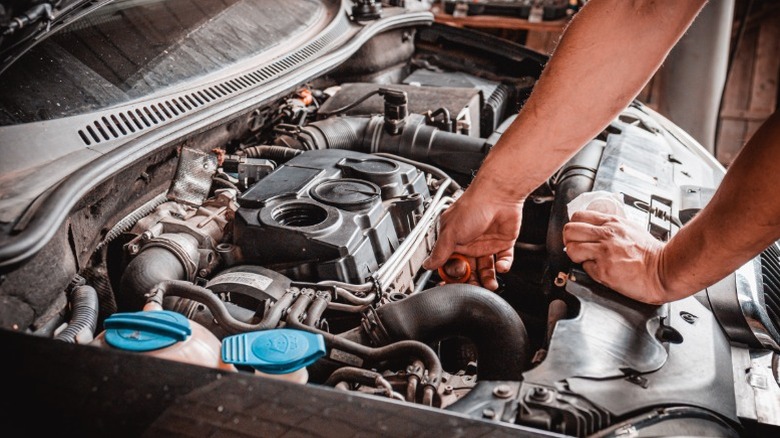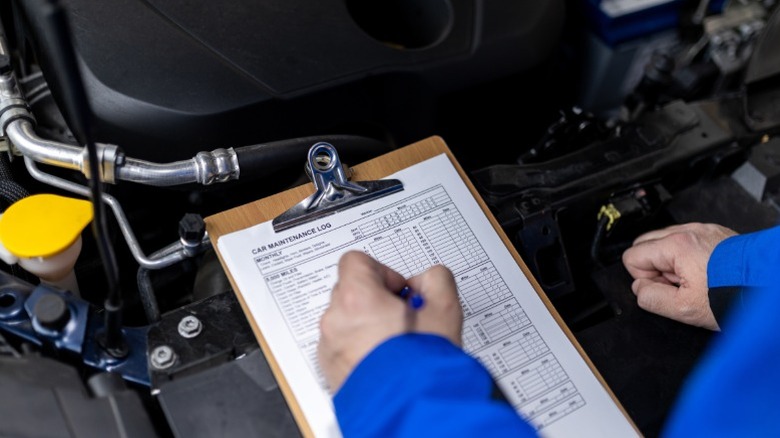12 Useful Tips To Maintain A High-Mileage Car
Many people still think high mileage is synonymous with frail, old, and weary, but a car with over 100,000 miles doesn't necessarily mean it's passed its prime. In fact, many high-performance cars you'll find on the road these days are high mileage, though the metric can differ based on the brand, model, engine type, maintenance history, and overall state of the car. Modern cars can surpass 200,000 miles, with some pushing 300,000 miles, while remaining incredibly reliable with consistent, diligent, and attentive maintenance.
High-mileage cars are often more affordable, which makes them attractive buys in today's market. But with that affordability comes a non-negotiable requirement: regular, proactive maintenance. As soon as a car hits the six-digit territory, things begin to change. Fluids degrade faster, rubber seals wear out, and sensors and electronics gradually begin to age and lose precision. With that said, here are 12 useful tips to maintain your high-mileage car.
Regularly check and replace worn-out parts
When you own a high-mileage car that's still in active use, the rules are different. You don't just drive anymore; you need to keep the car in the best condition. One great habit is routinely inspecting and replacing any worn-out parts.
Like with most machinery, over time, mechanical components such as spark plugs, suspension, and radiators experience heat and pressure fatigue. Fluids lose their effectiveness, and rubber parts like belts and hoses start cracking. For instance, a worn timing belt can suddenly break and cause engine damage that may cost thousands of dollars to repair.
Depending on the make and model of your car, timing belts often need to be replaced between 60,000 and 150,000 miles, while serpentine belts usually last between 60,000 and 100,000 miles. Radiator and heater hoses, on the other hand, tend to wear out after about four to five years, though heat and engine pressure can shorten this time frame. Your car should also be inspected and serviced every 12,000-16,000 miles, or at least once a year, to catch defects before they become serious. So, the next time you go for an oil change or rotate your tires, ask your mechanic to run a quick check under the hood. A $30 belt swap today could save you a $3,000 heartache tomorrow.
Watch out for noises
Sound is the car's first warning signal. That rattle you hear from under the hood or the squeals when you brake aren't just annoying background noise; it's your car trying to tell you that something is wrong. Since high-mileage cars are more prone to wear and tear, these unusual sounds can point to developing mechanical issues before they become serious. For example, a grinding sound under the hood might indicate a failing alternator or water pump bearing, while a high-pitched screech during braking could signal brake problems. And if the engine starts making knocking noises while driving, it could mean low oil levels or internal damage.
These unusual sounds are among the clearest signs of mechanical trouble and, if ignored, could lead to breakdowns. Driving with the radio off every so often can help you stay alert to new or changing sounds that might otherwise go unnoticed during your daily commute.
Maintain a strict, regular oil change routine
For cars with more than 100,000 miles on them, routine oil changes are arguably the single most important maintenance service for the engine. As an engine ages, internal components accumulate more debris and friction. Clean oil helps minimize wear and tear by cooling moving parts, reducing friction, and suspending dirt and particles that could otherwise cause damage.
There was a time when the 3,000-mile oil change was the golden rule. Today, a car can run up to 5,000 to 7,500 miles before needing one. The type of oil used also affects how often you'll need an oil change. The choice is usually between synthetic and conventional oils; the former has a longer lifespan and can handle harsh conditions. On the other hand, conventional oils need to be changed more frequently. A compromise is provided by synthetic blends, which offer some of the advantages of synthetic oil at a lesser price.
Transition to high-mileage oil blends
If your odometer is climbing and your car still has places to go, the regular oil you used when the mileage was on the lower side may no longer cut it. As the car gets older, its internal parts degrade, leaks appear, seals harden, and performance begins to slow down. You just know that it is time to switch to oils that understand the rhythm of your high-mileage engine better.
High-mileage oils aren't just marketing gimmicks; they're made with seal conditioners that repair damaged gaskets, reduce leaks, and lessen burn-off in aging engines. These oils contain extra agents that aggressively clear sludge, extending the life of exhausted engines. Making this transition too late wouldn't undo any damage already done. However, making the move early, around 75,000 miles, can help you completely avoid it. The formula of these oils also reduces oil consumption, which is a major headache for high-mileage car owners. While conventional oils can keep your old engine running, high-mileage blends allow it to breathe and reduce friction more effectively.
Fix minor leaks and repairs as soon as you can
At first glance, it appears to be nothing more than a minor stain on your driveway or perhaps a tiny leak beneath the engine bay. But you'd be mistaken. Putting off minor issues that come up in high-mileage cars is one mistake you, as a car owner, could make. The fix could jump from a $25 clamp to a $900 part replacement if what starts as a leak from a fractured hose or valve cover gasket turns into a major breakdown on the highway.
Parts like hoses, gaskets, seals, and filters are some of the most commonly neglected wear items and often the first to fail in older cars. Over time, even a minor coolant leak might result in warped cylinders, broken heads, or engine overheating. It is generally advised to regularly check the engine bay and underneath the car for leaks, especially close to radiators, oil pans, and transmission seals, where heat and pressure speed up wear. In other words, once your car starts whispering that something's wrong, you should listen and resolve the issue immediately. Your engine, along with your wallet, will very much thank you.
Frequent brake maintenance should be non-negotiable
You press the pedal, and there's a grind. Perhaps a delay. Perhaps nothing at all. The danger is that the damage might already be in motion by the time you realize that your brakes seem off. Brake pads are typically required to be replaced every 25,000 to 65,000 miles, depending on driving patterns, terrain, climate conditions, and the overall brake pad quality. However, other parts, such as the calipers and fluid lines, are more vulnerable to corrosion and heat stress in aging cars. Thus, in addition to wear, irregular maintenance contributes to the likelihood of complete brake failure.
Ignoring minor warning indicators like pulsating or squealing brakes could result in a repair bill of more than $500, or worse, an avoidable accident. So, because your brakes are the mechanism that separates control from disaster, it's crucial to stay proactive. Have your pads checked every 10,000 miles, change your brake fluid every two years, and don't delay repairs once your warning light starts to flicker.
Consistently clean the fuel system
Thinking of the fuel system in your car as its lungs, if they are blocked, breathing becomes difficult for the entire body. High-mileage vehicles are particularly at risk here. Over time, carbon deposits build up in the combustion chambers, throttle body, and fuel injectors. This debris can cause engine misfires, increase fuel consumption, and stifle overall motor performance.
Poor acceleration, harsh idling, and even stalling could occur from dirty fuel injectors. No high-mileage engine can afford to overlook the fact that even a slight imbalance in fuel spray can cause cylinders to burn unevenly. Also, cleaning isn't just for the pros; pouring DIY fuel system cleaners straight into your fuel tank every 3,000 to 5,000 miles helps remove dirt before it clogs the system. Though professional cleaning is still recommended, at least once a year, especially for older engines that have accumulated decades' worth of dirt. Likewise, not even modern direct injection engines are exempt. Consistent maintenance helps smooth out throttle response, recover lost MPG, and extend the life of pricey parts like oxygen sensors and fuel pumps.
Take care of the battery
The battery is one of the first systems to show symptoms of age-related decline in high-mileage vehicles. Car batteries typically last three to five years, but adverse driving habits, heat, and vibration can significantly reduce that time. Among the early warning signs of a faulty battery are dimming headlights and slow engine cranking.
Maintenance isn't just about replacing your battery when it dies; it's about preventing it from dying in the first place. To ensure strong electrical contact, you should clean terminal corrosion, a chalky blue or white buildup, regularly. Corroded terminals can interfere with proper charging and discharging, gradually weakening your battery over time. Fortunately, this corrosion can be safely neutralized with a basic mixture of water and baking soda. Every few months, check the health of your battery with a voltmeter. If it is more than four years old, swollen, or leaking, replace it. Also, inspect the clamps and wires for cracks or looseness, as extreme temperatures, particularly summer heat, can accelerate chemical reactions in your battery, hastening its degradation.
Keep the car clean
Although it might sound superficial, how your car looks on the outside can subtly reflect what's happening underneath. Most drivers think of cleaning their car as a weekend chore or a quick cosmetic fix, but for high-mileage vehicles, it should be an essential part of preservation. Built-up dirt, road salt, brake dust, and even bird droppings don't just make your car look unsightly; they chip away at the paint and cause body parts to rust quickly. While improper cleaning techniques, such as skipping a pre-rinse or washing in direct sunlight, can result in micro-scratches that eventually dull your car's shine, waxing your car every three to four months protects the paint and helps preserve its resale value.
Interior detailing is also important. Dirt on dashboards and control panels can make wear and tear very noticeable, and dust accumulation in vents could strain your HVAC system, affecting the quality of the cabin air. Washing your car regularly, waxing, and vacuuming the interior every few weeks can seem inconsequential, but these habits prevent rust, preserve the car's resale value, and keep your car feeling newer than it looks.
Monitor your car coolant like a hawk
Just like athletes, engines burn hot, fast, and hard, and if you're running a high-mileage car, your coolant is like the silent hero that saves your engine from failing in the middle of a marathon. Just one mistake of neglect can make the heat build up to the point where your gasket fails, your engine warps, and you find yourself stranded, regretfully calling for help by the roadside. Beyond regulating temperature, coolant prevents corrosion in the engine block, water pump, and radiator. Eventually, the coolant breaks down and becomes acidic, and when this happens, it begins to eat away at metal from the inside out.
Most manufacturers recommend flushing your car's coolant every 30,000 to 50,000 miles, but it's important to check the level and condition every few weeks. For your high-mileage car, it is also advisable to check the coolant levels every 1,000 to 3,000 miles, particularly if you detect coolant loss or notice odd smells coming from underneath.
Care for your transmission; change the fluid regularly
If the engine is the heart of your car, then the transmission is its nervous system. It's the core part responsible for delivering power to the wheels and keeping everything else in sync. For high-mileage cars, disregarding proper transmission maintenance is like asking for trouble and hoping it doesn't respond. While transmission fluid helps lubricate, cool, and clean the internal parts of your car, heat and friction can cause it to slowly degrade over time. As a result, shifting could become difficult, parts could wear out faster, and your transmission could overheat or malfunction completely.
It is necessary to change your transmission fluid on a regular basis, but you should also follow your car manufacturer's recommendations. While some suggest flushing every 30,000 miles, others propose flushing every 60,000 miles. In any case, leaving it on for too long is risky. Burning smells, slipping gears, delayed acceleration, or dark, gritty fluid are often telltale signs that you have waited too long. If your car is automatic, have a professional check the fluid's level and quality periodically.
Keep a maintenance log
Imagine you are trying to sell your car that has amassed 170,000 miles. With a raised eyebrow, the buyer asks, "Has it been well maintained?" Instead of scrambling for receipts or hazy recollections, you pull out a neat log that has documented every tire rotation, belt replacement, and oil change since the very first year. Keeping a maintenance log might not initially feel necessary, but it's an essential part of long-term car ownership. It's not just about simply recalling when your last brakes were serviced; it's about having a crystal-clear map of your car's health history. Keeping track of your car's maintenance will significantly increase its resale value. When buyers can see precisely what work has been done and when, they feel more assured. Mechanics also rely on these logs to diagnose problems quickly and accurately.
You don't need a fancy app or spreadsheet; just a basic notebook in your glove box or even your phone's notes app is more than enough. Include service dates, mileage, work done, and the shop or parts used when entering logs. This eventually turns into your car's resume, showing proof that it has been well maintained with more miles to give.
